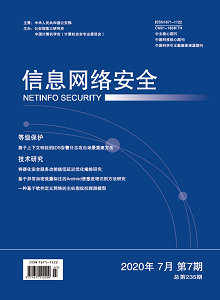The development of cloud computing brings the need for security services virtualization. Building SFC (service function chain) based on NFV/SDN technology is an important way to meet the need of virtualized security services in data centers. Containerization has become the latest development trend of security SFC orchestration. Traditional security SFC orchestration algorithms are usually on the virtual machine architectures, which can not meet requirements in lightweight, latency, flexibility, etc., and have not fully utilized the performance advantages of containerized NFV platform. This paper constructs a containerized NFV platform orchestration model, analyzes the network latency optimization goal of security SFC, and studies the approximate local optimization property under flat network topology. This paper proposes a latency optimal placement (LOP) algorithm, which uses multi-stage decision to handle each security SFC request, and in each stage, a physical host that can hold the maximum number of consecutive VNFs is selected to minimize the cross host latency of each security SFC. Simulation experiments and comparative analysis show that, compared with MINI algorithm that maximizes resource utilization, the LOP algorithm proposed in this paper can achieve the optimization goal of reducing latency, and can reduce the resource consumption of placing the security SFC.

